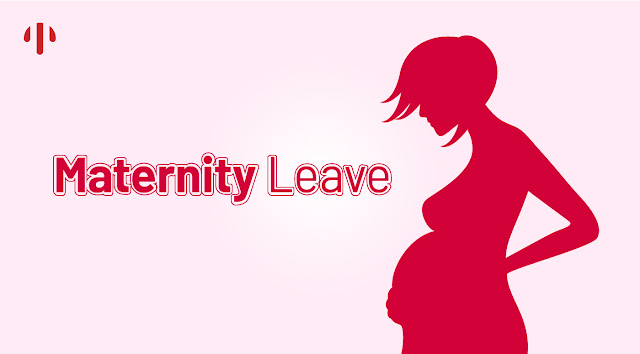Know the Maternity leave benefits under Maternity leave rules in India
The key thought behind providing the maternity leave benefits to women is to uphold the self-respect. And to provide a sense of pride of nurturing to be a mother. The maternity leave law in India supports a working woman to take time from their work. To protect the health of the mother and ensuring complete safety to the child.
- To provide for financial support for the mother and to bring the advantages or remittances to working ladies. With an aim to provide uniform maternity leave benefits all over the country. While safeguarding working women and upholding their pride. Ensuring full and healthy maintenance of herself and her child while staying away from work.
- To avail full-compensation under Maternity Benefit Act, 1961. Maternity leave law in India advises absolute care for both economic and medical support by the organization. The law provides Maternity leave benefits to the women working in shops, factories and other establishments. The minimum count should be more than 10 employees. The women employees in India are on a rise. Maternity Act, 1961 aims to bring a uniformity of the legislation regarding providing maternity benefits to the working women.
Protection against dismissal or termination during pregnancy
Section 12 provides protection to pregnant women during pregnancy and any dismissal or termination at the time of pregnancy is unlawful and is punishable under maternity leave law in India. However, any misconduct by the employee shall have necessary actions as per the company policies. The minimum number of days required for a woman to work in an organization to avail the maternity leave benefits is 80. Therefore, if a woman has worked at least 80 days during the past 12 months immediately preceding the expected delivery date. It is irrespective of if the employee is on probation or on contractual basis.Duration of Maternity Leave in India
The current Amendment Act, 2017, has increased the duration of paid maternity leave benefit to 26 weeks, which was 12 weeks earlier. Therefore, women can avail paid leaves of 26 weeks after the introduction of the amendment act, 2017 effective July 1, 2017. This duration is applicable for the birth of the first and second child and women who are expecting a third or a consecutive child they shall be paid for a duration of 12 weeks (6 weeks pre-delivery and 6 weeks post-delivery).Adoption of a child
The Amendment Act, 2017 is applicable in case of adoption as well. The women shall be given 12 weeks paid leaves from the date of adoption. Therefore women who plan to adopt the child can avail the leaves for 12 weeks. The earlier law was silent for the adoption case and growth in the number of adoption in India and to encourage the adoption put forward by the government of India.Work from Home
Many organizations provide options to work from home for providing facilities to mothers and employees who have to take care of their dependents. While this type of working practice has been increasing in India, this act also introduces a new option to work from home. However, this option is only applicable only if defined under company policy. Women can avail the option to work from home to take care of their young ones even after availing the maternity leave benefits under the maternity leave laws in India.Crèches
In an establishment having more than 50 women employees must have in-house crèche facilities. The women must be allowed to visit the facility 4 times during a day to look after the child. However, the Act is silent on the maximum age of the child for a crèche facility.Awareness
It is the responsibility of the employer to inform about the maternity leave benefits and policies. It should be communicated to the women employees at the time of appointment. Written or electronic communication can be used for the same. Every employer has to make the joining women employees aware of the company policies in relation to the availing of the maternity leaves benefits and the minimum requirements for such leaves along with the documentation required. Women employees should be aware of the maternity leave rules in India.Duration for availing leave under maternity leave law in India
The paid leaves can be availed 8 weeks before the expected delivery date and shall be extended to 26 weeks of paid leaves from this time period. However, it depends on the women employee to plan the leaves the act only talks about the time frame by when the eligibility to avail the leave is triggered.Maternity benefit Amendment Act, 2017 under maternity leave rules in India has undoubtedly addressed some issues that were not incorporated in the Maternity Act 1961 before. While maternity leave benefits act amendments have helped in the empowerment of women. It has also been providing a sense of safety and self-rights at the work place. There are some issues which have not been addressed by the act:
Promoting Patriarchy
The amendment act is getting criticism as the government has not made any provision for leaves for the fathers. The complete responsibility of nurturing and caring of child is on mother. It in turn promotes patriarchy as a father should get leaves to take care of his child.It is worth to quote the words by Quentin: “Maternity leave and parental leave is absolutely vital for strengthening families. It’s an issue for men, women” – Quentin Bryce
Parental leaves are a part of legal program and it comprise of the legal rights and obligations for the parents. The international labour organization (ILO) also oversees the maternity leave rules in India and other countries. In a study, conducted in 2014 on 186 countries by ILO, it was found that all countries were in compliance of the laws relating to parental leaves. However, in India there is no legislation in this regard. There are no rules or regulations in relation to family leave or parental or paternal leave in the maternity leave rules in India. It raises concern as to the intent of the act. It seems to promote patriarchy.
Negative impact on job opportunities for women
As a result of such high number of paid leaves many private firms and organization will avoid giving job opportunities to married women. The increase in the number of paid leaves from 12 weeks to 26 weeks will impact the costing of the employer. It will directly impact the job opportunities for women as the employer will end up paying full cost to the women employee on leave. At which they can hire another resource during the absence, increasing the cost. This in turn will result in increase in preference to hire male employees over females. The provision could affect organizations who have been employing women workers predominantly.Lack of clarity
There are multiple provisions in the act which lacks clarity and are subject to assumptions and interpretation of the law. For example, it is not clear that the crèche facility is applicable for the child up to what maximum age. Also, the provided time period can be extended for the establishment.No provision for unorganized sector
Many socialist groups are criticizing as the act is applicable on the establishment having more than 10 employees. The unorganized sector which employees around 90% of the working women class is outside of this purview. The unorganized sector covers the factories, mines, shops, and establishments having less than 10 employees. This makes the act ineffective as it excludes a major chunk of the society of any paid maternity leave under the maternity leave rules in India.Lack of Institutional support
Though the women working in the unorganised sector can avail benefits from the schemes such as the Janani Suraksha Yojana and the Indira Gandhi Matritva Sahyog Yojana. Maternity leave benefits come only in terms of cash assistance and lack of other institutional support provided in the maternity benefit Act.Recommendations and conclusion
Increasing maternity benefit is a welcome step. The government should devise some mechanism to maintain the competitiveness of the private sector.Uniformity in labour law about maternity leave benefits
The government must bring uniformity in labour laws regarding maternity leave benefits. The acts like Employees State Insurance Act, 1948, All India Services (Leave) Rules, 1955, Central Civil Services (Leave) Rules, 1972, Factories Act, 1948, and the Unorganized Workers Social Security Act, 2008 has issues in coverage, reimbursements and funding. These laws must equally benefit everyone across India.Better to rethink on the financial burden of the employer
In many countries, the maternity leaves include paid social insurance or other funds aiming to provide benefits. The current amendment may dissuade employers from hiring women as they have to cover the additional financial burden of maternity benefits. To stop this, the government should follow the advice of the international labour organization (also known as ILO). ILO has expressed that the expense of giving maternity advantages must not be only borne by the business. In such a manner, the administration should approach intending to the maternity advantage financing issues.The legislature ought to settle on paying advantages through mandatory social protection or open assets as suggested by the ILO. In such a manner, the Pan India extension of Maternity Benefit Program (MBP) of the Ministry of Women and Child Development is an appreciated advance. The plan is applicable to every pregnant lady and lactating moms and rejects the pregnant ladies and lactating moms in standard work with the Central Government or State Governments and in Public Sector Undertakings.




Comments
Post a Comment